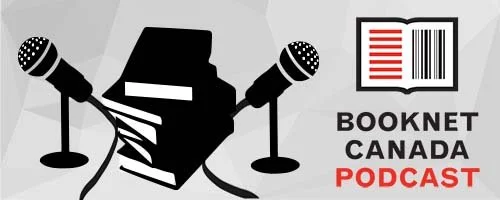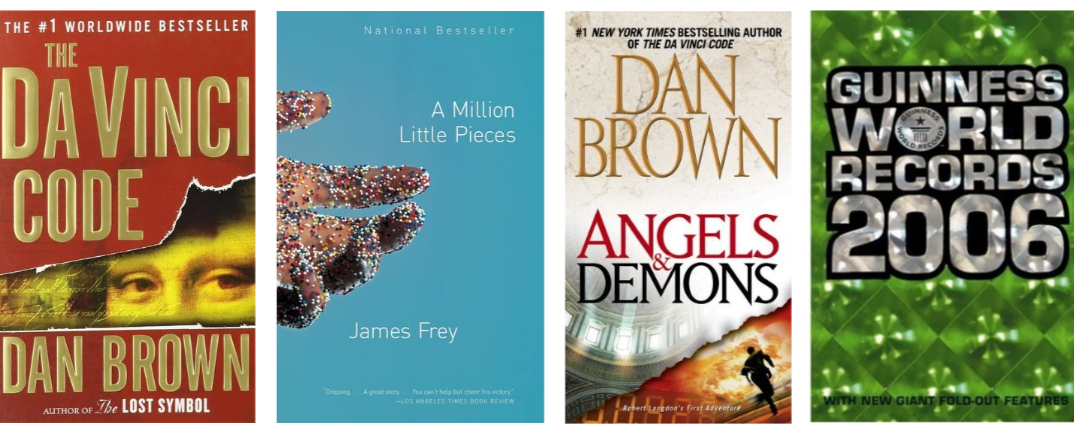The results for our annual Canadian Leisure and Reading survey are in! BookNet Canada President & CEO Noah Genner and Research Associate Shimona Hirchberg will tell you all about them in this month's podcast episode.
(Scroll down for a transcript of the conversation.)
Want to make sure you never miss an episode of the podcast? You can subscribe for free on iTunes, Stitcher, Pocket Casts, TuneIn, or SoundCloud.
Further reading/listening
Canadian Leisure & Reading Study 2020
Noah Genner’s Book industry state of the nation 2020 presentation
Reading Together: Book Clubs in Canada
Transcript
Shimona Hirchberg: Hey there! Your host of this month’s episode of The BookNet Canada Podcast is Shimona Hirchberg. I'm the research associate at BookNet. The results for our annual Canadian Leisure and Reading survey are in! And I’ll tell you all about it. Well, not all. For that and graphs you can download the free PDF on our website at booknetcanada.ca/bnc-research. The link is also in our show notes.
Before I get to the results, I’ll quickly review how we set the survey up. We fielded it in January in English through an online and quantitative survey. Respondents were representative of the Canadian adult population based on age, gender, and geographical region. We asked about 1,600 Canadians questions about their free time and leisure activities. Then, we asked 1,000 readers reading-related questions. The survey found that 8 out of 10 Canadians are readers. This hasn’t significantly changed in the past five years.
Noah Genner, President & CEO of BookNet Canada, will take us through the overview results in the following clips from his Tech Forum 2020 presentation, Book industry state of the nation 2020. The graph he talks about is in our study with alt text.
Noah Genner: I'm going to start with kind of our top-line number, and this is brand new data, we just got this at the end of January. So every year we survey, as is mentioned here, we survey Canadians on their reading habits. So last year, 79% of adult, English-speaking Canadians — that's 18 and above — told us that they read or listened to a book in the last year. I'll come back to that number in a few minutes. I think that's a pretty good number but we can look at it in context.
The Pew Research Center found that 72% of US adults read at least one— at least part of one book in 2018 so we're kind of comparable there. And in 2016, Australia — the most recent stat we found — 92% of Australians read at least one book in part or full in the last year. Maybe they took part in some of the Australian reading hour programs. In New Zealand, 86% of adults read at least one book in fuller or in part in 2017. So we're similar to other English-speaking territories. There may be differences in methodology between these different studies so that might account for the differences.
This is our year-over-year reading numbers for the same adult, English-speaking Canadians and what we've seen in the last seven or eight years. The reason why I've separated 2020 a little bit out from the rest of the cohort there, the rest of the years, is that we changed our methodology a bit this year: we both increased the number of responses to a thousand and we went with a different survey provider. So doing year over year comparison is not perfectly scientific. But still the numbers come out relatively the same. And so we've seen a little bit of a decline, just outside the margin of error for a study like this, since 2014 in the number adults that are reading or listening to a book in a year. But it's been steady over the last couple years around 80-ish% or just under 80%.
SH: And now we’re going to start off with leisure activities. First off, only about 2 in 10 Canadians feel like they don’t have enough leisure time. People in the age groups 30-44 and 45-54 feel like they have the least time. 30% of both age groups said they didn't have enough leisure time. Women would also like more leisure time: 24% of women versus 19% of men said they didn't have enough. We found that as people age, their perception of their own leisure time stays the same and doesn’t increase or decrease. 25% of readers said they have more than enough leisure time, compared to 30% of non-readers.
Readers budget for recreational activities more than non-readers — about 6 in 10 compared with 4 in 10. Men are more likely than women to have no restrictions on spending for their leisure activities: 35% versus 24%.
Readers are more likely to play board games, read magazines, and work on crafts more often than non-readers. But both readers and non-readers have pretty similar rates for browsing the internet and social media and watching videos, TV, and/or movies. Readers listen to podcasts significantly more than non-readers and readers who listen to audiobooks listen to podcasts the most.
Nine in 10 readers visited a general social network site at least once last year while only four in 10 visited a book-specific social network site. 24% attended at least one author- or book-related event and 23% participated in a book club or reading group. (And, as a side note: for a deep dive into book clubs, you might be interested in our paid study Reading Together: Book Clubs in Canada, which is available on our website, you can find the link in the show notes.) Only 7% of readers participated in a reading challenge last year. Those who read more books are more likely to track them, by adding the book to a list of books currently read or finished reading (makes sense, eh?). Still, 63% of readers who read 50 books or more don’t track those books. Wut?
Up next, we’re going to talk about 2020 Canadian data on reading frequency, formats, buying and borrowing, discovery and awareness, and subjects.
For most readers, reading frequency has stayed the same from two years ago to last year. Most readers are reading daily (28%) or weekly (26%). When we asked readers of each format how often they read, we found that the majority of readers of all formats are reading weekly or more often. Readers 65 and over read the most frequently, followed by those aged 18-29. People who read 50 or more books in the last year are reading more frequently than everyone else (stands to reason). Those reading more than once a day are mostly made up of these avid readers (51%) – a large percentage, considering that avid readers made up only 9% of all readers.
Here's another clip from Noah Genner's Tech Forum 2020 presentation Book industry state of the nation 2020 where he talks about format preferences:
NG: And then we also ask, what do they prefer? So of those same people, 66% said they prefer reading print books, 16% said they prefer reading ebooks, and only 8% said they prefer listening to audiobooks. Eleven percent said they had no preference. Readers of all types still prefer print. About 50% of ebook and audiobook listeners still prefer print. eBook readers prefer ebooks but are much more likely to also prefer audiobooks than are print readers. Audiobook listeners, interestingly enough, prefer all other formats over audiobooks but they also really like ebooks. And that probably shouldn't come as a big surprise, as people switch to the digital formats, that's how they consume their material.
When we look at this by age it's a little bit different. So what I've done here is taken those same preferences for print, e[book], and audio, and broken them down by the different age groups that you can see down the rows there. So 18 to 29, 30 to 44, etc., etc., etc. So 74% of 18- to 29-year-olds prefer print books, 13% prefer ebook, and only 7% prefer audio. So once again, everyone prefers print, as you can see here. 18 to 29 and 55 and over prefer print more than the kind of middle cohorts. The middle cohorts prefer ebooks and audiobooks more than the others. Almost 100% of 18- to 29-year-olds read print — remember that — the highest. But everyone reads print fairly highly. 21% of the 45- to 54-year-olds read ebooks — the highest. 11% of 30- to 44 year-olds listen to audiobooks and that's the highest group for those. And then there's some missing percentages here and they're for the none — they don't prefer any as you saw in the previous slide.
SH: Download the free report, see the show notes for the link, to get the details of the age group breakdown table.
64% of readers read multiple formats while 45% only read digital books. 65% of readers prefer print books and 11% have no preference.
About a quarter of readers often or sometimes experienced difficulty and discomfort or pain reading print books. This increases for digital readers who read print books: 33% of ebook readers and 38% of audiobook listeners experienced difficulty and discomfort or pain reading print books.
Let’s talk more about digital reading. The most popular reading devices for reading ebooks are tablets, followed by smartphones. Reading ebooks on a smartphone is trending upwards, with a jump of about 15% from 2014 to 2020. Computer and e-reader use is trending downwards, 5% for computer use and 10% for e-reader use. Audiobook listeners are mainly using their smartphone, and then using a tablet.
The most popular ebook reading app is Amazon Kindle, and for audiobooks, it’s YouTube.
Audiobook listeners prefer listening to a voice actor rather than an author and 40% of audiobook listeners usually or sometimes won’t read a specific book if they can’t find an audiobook version. For data about usage of more audiobook features like multiple versions or narrators, sound effects, speed, abridged versions, and subscription sharing and more, download our free report.
Now let’s talk about buying and borrowing. About eight in 10 readers bought a book at least once last year and six in 10 readers borrowed at least one book from a public library. Print books and audiobooks are mostly borrowed from a public library.
Readers aged 18 to 29 buy more books than they borrow across all book formats.
Almost one in 10 print and ebook readers bought a copy of a book they had previously borrowed. Slightly more audiobook listeners do that.
Looking at discovery and awareness, the top ways readers discover books is through word-of-mouth, bookstores, and public libraries. Word-of-mouth takes first place at 34% and bookstores and public libraries are tied for second at 29%.
Print readers discover books mostly through print media or in-person methods. On the other hand, readers of digital formats discover books mainly through online methods.
Subject/topic, author, and book description are the top three reasons readers decided to read or listen to a specific book across all formats. The more books people read last year, the more likely they were to have read books by or about black or indigenous people, people of colour, immigrants, religious minorities, disabled people, and those who identify as LGBTQIA+.
Looking at diversity in Canadian respondents, characters, and authors, we did some cross-tabbing. 41% of readers who self-identified as BIPOC read books by or about Black, Indigenous, or people of colour. 39% of readers who self-identified as having immigrant status read books in a language other than English. 31% of readers who self-identified as non-binary or LGBTQIA+ read books by or about people from those groups. 26% of readers who self-identified as belonging to a religious minority read books by or about people of non-Christian religions. And lastly, 16% of readers who self-identified as disabled read books by or about disabled people.
While reading a book, or after finishing it, 43% of readers searched for other books by that author and 20% of readers read more about the author or followed the author online.
Four in ten readers read books that were made into movies or a TV show. Three in ten readers read books by or about Canadians. Two in ten readers read comics or graphic novels. And, one in ten readers read books in a language other than English.
Looking at subjects, about six in ten readers read adult Fiction and about five in ten read adult Non-Fiction. I’ll share the top 5 subjects that Canadians read most last year, and you can find out more about that cross-tabbed by formats, age groups, and gender in the study, available for free download on our website. The most popular Fiction subjects that people read were Mystery or Thrillers, Historical Fiction, and, thirdly, Science Fiction. Lastly, the most popular Non-Fiction subjects were History and Biographies or Memoirs.
You can download the free PDF of the Canadian Leisure and Reading Study 2020 on our website at booknetcanada.ca/bnc-research. The link is also in our show notes. Feel free to also subscribe to our monthly research newsletter to get BookNet research updates straight to your inbox.
The BookNet Canada staff, board, partners, and today’s makeshift studio are located on the traditional territories of the original nations of this land: Mississaugas of the Credit First Nation, the Anishinaabe, the Haudenosaunee, Wendat, and Huron indigenous peoples. We endorse the calls to action from the Truth and Reconciliation Commission of Canada and support an ongoing shift from gatekeeping to space-making in the book industry. We hope that our work, including this podcast, helps to create an environment that supports that shift. We'd also like to acknowledge the Government of Canada for their financial support to the Canada Book Fund. Lastly, thank you listeners!
Take care. Bye!














The latest news out of the European Commission.